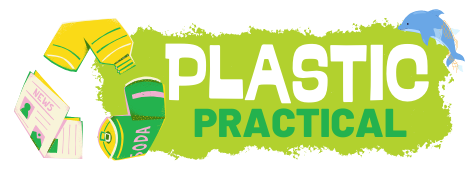I keep plastic clutter manageable by sorting everything into keep, donate, recycle, or trash and handling each lid and base only once. I toss warped, stained, smelly, or missing-lid pieces and keep containers I’ve used in the last year. I limit sizes to versatile nesting sets, store everyday pieces within reach, and use a drawer for odd lids. I follow a one-in, one-out rule and do quick quarterly audits, and I’ll show you how to apply each step.
Key Takeaways
- Sort all plastic containers into keep, donate, recycle, or trash in one quick pass to avoid hoarding.
- Keep only versatile, nested sizes (1-, 2-, 4-cup, and a gallon tote) and discard odd, nonstacking pieces.
- Handle each lid and base once: match, test the seal, and discard warped, stained, smelly, or missing‑lid items.
- Store everyday containers at eye level, stack bases by nesting, and use a bin or magazine holder for lids.
- Enforce one‑in, one‑out and schedule quarterly audits to cull, consolidate, and maintain tidy plastic storage.
Because I’ve watched plastic containers multiply faster than I expected, I’ve learned a few practical rules for keeping them useful instead of turning my pantry into a jumbled archive. I start by sorting everything into four groups: keep, donate, recycle, and trash. I handle this quickly, touching each lid and base once. If a container’s lost a lid, is warped, stained, or smells despite multiple washes, it doesn’t belong in the keep pile. If it’s intact and used within the past year, it usually earns a spot back on the shelf.
I sort containers fast—keep, donate, recycle, trash—discarding warped, missing-lid, stained, or smelly pieces to avoid pantry chaos.
I limit my set by size and shape. I keep a small range of versatile sizes — one-cup, two-cup, four-cup, and a larger gallon-ish tote — and I favor square or rectangular shapes because they stack neatly. I get rid of odd sizes that don’t nest or pair with lids. That decision rule cuts clutter fast: if a piece doesn’t stack or match a lid, it’s gone.
I also keep a single drawer or bin labeled “odd lids” and one labeled “odd bases” to catch items midlife; once those bins fill, I reassess and donate or discard.
I inspect the lids for seals and condition. Snap-on lids that still seal get primacy for food storage; cracked or brittle lids get recycled. I keep only clear, microwavable, and dishwasher-safe pieces for daily use. Special-purpose containers—silicone molds, single-use takeout boxes, or promotional freebies—get evaluated for practical reuse. If I can’t assign them a specific purpose within a month, they leave the house.
I organize storage by frequency of use. Everyday containers live at eye level or in an accessible drawer; seasonal or rarely used pieces go to the back or a high shelf. I store lids vertically in a magazine holder or a shallow bin so I can see sizes at a glance. I stack bases by nesting them inside each other and place the corresponding lids nearby. This reduces the time I spend hunting for matches and discourages accumulation.
I establish a one-in, one-out rule: when I bring a new container home, I remove an existing one. That keeps quantity steady and forces me to evaluate each addition. I also schedule a quarterly quick audit: fifteen minutes to toss bad pieces, consolidate similar sizes, and wipe down surfaces.
Frequently Asked Questions
How Do I Know if My Plastic Storage Is Hazardous?
How can you tell? I check labels and the recycling symbol first, avoid cracked or stained containers, ditch plastics not marked microwave- or food-safe, replace soft, warped, or old items, and keep chemicals stored separately for safety.
Can I Freeze Liquids in Reused Plastic Containers?
Yes—you can freeze liquids in some reused plastic containers, but I check the recycling code (look for #1, #2, #4, #5), ensure lids seal, avoid cracked or stained plastics, and thaw safely to prevent contamination or chemical leaching.
What’s the Safest Way to Clean Stained Plastic Bins?
Think of stains as lingering guests; I scrub them away with baking soda paste and vinegar spray, rinse thoroughly, sun-dry to bleach faint marks, and repeat for stubborn spots, avoiding harsh abrasives that nick plastic and trap grime.
Are Plastic Food Lids Recyclable With Other Plastics?
Yes, usually they are recyclable with other plastics if your local program accepts that resin type; I check lids for recycling symbols, rinse them, remove nonplastic parts, and separate soft or flimsy lids if my recycler requires it.
How Often Should I Replace Plastic Storage Containers?
Replace plastic storage containers every 1–2 years if used daily; sooner if cracked, warped, stained, or odor-retaining. I inspect seals, lids, and safety labels regularly, and I discard anything showing damage or BPA concerns promptly.

